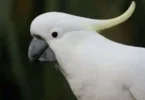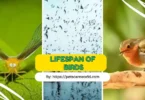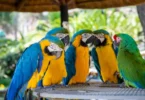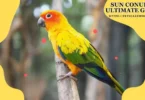Welcome to our comprehensive guide on the Red Vented Bulbul. In this article, we will delve deep into the attractive world of this beautiful avian species. From its physical characteristics to its habitat, behavior, and significance, we’ve got it all covered. By the end of this article, you’ll be well-versed in everything Red Vented Bulbul-related, and we aim to provide you with the most informative content available.
The Red Vented Bulbul: A Closer Look
Physical Characteristics
The Red Vented Bulbul, scientifically known as Pycnonotus cafer, is a small passerine bird native to South Asia. Its name is derived from the striking crimson patch on its lower belly, which is one of its most distinctive features. Let’s take a closer look at its physical characteristics:

- Size: Red Vented Bulbuls typically measure between 20 to 25 centimeters in length, making them a relatively small bird species.
- Coloration: Apart from the red vent, they have brownish-grey plumage on their upper body, a white rump, and a black tail with white tips. Their eyes are dark, and their beaks are sharp and slender.
- Voice: These birds are known for their melodious calls, consisting of various whistles and chattering sounds. Their vocalizations are often used to communicate with other members of their group.
Habitat and Range
Red Vented Bulbuls are highly adaptable and can be found in a wide range of habitats, including:
- Forests: They inhabit both deciduous and evergreen forests, where they can be seen perched on tree branches or foraging for food on the forest floor.
- Urban Areas: These birds have also adapted to urban environments, and it’s not uncommon to spot them in gardens, parks, and even near human settlements.
Behavior
Understanding the behavior of the Red Vented Bulbul is crucial to appreciating this bird fully. Here are some key insights:
- Diet: Their diet primarily consists of fruits, berries, insects, and flower nectar. This diverse diet makes them important pollinators in their ecosystem.
- Social Structure: Red Vented Bulbuls are social birds that often travel in pairs or small groups. They are known for their playful behavior and acrobatic flight displays.
- Breeding: During the breeding season, these birds build cup-shaped nests in trees and shrubs. The female typically lays 2-3 eggs, and both parents share the responsibility of incubation and feeding the chicks.
Conservation Status
As with many species in the natural world, the Red Vented Bulbul faces several challenges to its survival. While it is not currently considered endangered, habitat loss due to deforestation and urbanization poses a threat to their populations. Conservation efforts are crucial to ensure the continued existence of these charming birds.
Importance in Culture
The Red Vented Bulbul holds a special place in the cultures of South Asia. It has been featured in various folk songs and poems, often symbolizing love and beauty. In Hindu mythology, it is associated with the goddess Saraswati, the deity of knowledge and the arts.
How long Red Vented Bulbul live?

Red Vented Bulbuls have a relatively short lifespan in the wild. On average, they live for about 5 to 7 years. However, their exact lifespan can vary depending on factors such as environmental conditions, availability of food, and threats from predators. In captivity, where they are protected from many natural risks, they may live longer, potentially up to 10 years or more.
How rare is red vented bulbul?

The rarity of the Red Vented Bulbul can vary depending on its specific geographic location and the extent of human influence on its habitat. Here’s a general overview of its rarity:
- Common in the Native Range: The Red Vented Bulbul is native to South Asia, where it is relatively common in many parts of its range. In these areas, it can often be found in gardens, parks, forests, and even urban environments. In such regions, it is not considered rare.
- Local Variations: Within its native range, there can be variations in its abundance. For example, in some densely populated urban areas, it might be more common due to the availability of food and nesting sites, while in more remote or heavily forested regions, it could be less frequently seen.
- Conservation Concerns: While the Red Vented Bulbul is not classified as globally endangered, it faces localized threats in certain areas. Habitat destruction due to deforestation and urbanization can reduce the population in specific regions.
- Cultural Significance: In some cultures, this bird is admired and appreciated, which can lead to conservation efforts and protection in certain areas.
- Local Conservation Status: Conservation status can vary by region. In some areas, local authorities or organizations might classify it as a species of concern if its populations are declining due to habitat loss or other factors.
In summary, the Red Vented Bulbul is not considered globally rare. It is often encountered in its native range. However, its abundance can vary by location, and local conservation efforts may be needed to protect its populations in certain areas where it faces threats.
What do red vented bulbul eat?

Red Vented Bulbuls have an omnivorous diet, which means they consume a variety of food items. Their diet primarily consists of:
- Fruits and Berries: Red Vented Bulbuls are frugivorous, meaning they feed on a wide range of fruits and berries. They often pluck these from trees and shrubs. Their diet can include both cultivated and wild fruits.
- Insects: In addition to fruits, they are also insectivorous, feeding on insects like beetles, caterpillars, ants, and other small arthropods. Insects provide them with essential proteins.
- Flower Nectar: These birds are known to sip nectar from flowers. They play a role in pollination as they visit various flowers in search of nectar, transferring pollen from one flower to another.
- Seeds: While seeds are not a primary part of their diet, they may consume small seeds occasionally. This dietary variety helps them adapt to different food sources.
Their diet can vary depending on the season and food availability in their habitat. This diverse diet allows them to thrive in various environments, from gardens and parks to forests and urban areas.
Does the red vented Bulbul make vitamin C?
No, the Red Vented Bulbul, like most birds, does not produce vitamin C (ascorbic acid) internally. Unlike humans and some other mammals, birds in general have the genetic capability to synthesize their own vitamin C. Therefore, they do not rely on dietary sources of vitamin C.
The ability to synthesize vitamin C is common among most bird species, and this adaptation has evolved as a survival mechanism. It allows birds to thrive in environments where dietary sources of vitamin C may be limited or inconsistent.
So, in summary, the Red Vented Bulbul, like other birds, has the biological capacity to produce its own vitamin C and does not need to obtain it from its diet.
What are the negative effects of red vented bulbuls?
While Red Vented Bulbuls are fascinating and beautiful birds, they can have both positive and negative effects on their ecosystems and human environments. Here are some of the potential negative effects associated with Red Vented Bulbuls:
- Crop Damage: In some areas, Red Vented Bulbuls can be considered agricultural pests. They may feed on fruit crops, damaging fruit trees and reducing crop yields. This can lead to economic losses for farmers.
- Competition with Native Species: When introduced to non-native environments, Red Vented Bulbuls can compete with native bird species for food and nesting sites. This competition can sometimes lead to a decline in native bird populations.
- Nesting in Inappropriate Locations: Red Vented Bulbuls may choose to nest in locations that are less than ideal, such as near human structures. This can lead to conflicts with humans and potential property damage.
- Impact on Ecosystems: In some cases, their feeding habits, particularly their consumption of insects and nectar, can disrupt local ecosystems. For example, their heavy consumption of certain insects can affect the populations of those insects, potentially impacting other species that rely on them for food.
- Spread of Invasive Plants: Red Vented Bulbuls are known to disperse seeds through their droppings. In some instances, this can lead to the spread of invasive plant species, which can negatively impact native vegetation.
- Noise Pollution: While their melodious calls are appreciated by many, in urban areas, the loud and persistent vocalizations of Red Vented Bulbuls can contribute to noise pollution and may disturb residents.
It’s important to note that the impact of Red Vented Bulbuls can vary depending on the specific location and environmental conditions. In their native habitats, they play important ecological roles as pollinators and seed dispersers. However, when introduced to non-native areas or when their populations become unnaturally high, they can pose challenges that require management and conservation efforts.
Red-vented bulbul male female difference

Distinguishing between male and female Red Vented Bulbuls (Pycnonotus cafer) can be somewhat challenging based solely on their physical characteristics, as they display sexual dimorphism to a limited extent. Here are some key differences that can help in identifying the male and female Red-Vented Bulbuls:
Plumage Coloration:
- Male: Male Red Vented Bulbuls typically have slightly brighter and more vibrant plumage compared to females. Their red vent, after which they are named, is often more vivid.
- Female: Female Red-Vented Bulbuls tend to have slightly duller or paler plumage compared to males. The red vent may be present but is often less conspicuous.
Size and Body Shape:
- Male: In some cases, males may appear slightly larger and more robust than females, although this difference can be subtle and is not always reliable for distinguishing between the sexes.
- Female: Females may appear slightly smaller and have a more streamlined body shape.
Behavior: Males are often more vocal and may engage in singing and territorial displays, especially during the breeding season. They use their vocalizations to attract mates and defend their territories.
Nesting Behavior: During the breeding season, female Red Vented Bulbuls are primarily responsible for building nests and incubating eggs. They may spend more time near nests and show nesting behavior.
It’s important to note that these differences are not always pronounced, and there can be individual variations. Juvenile Red-Vented Bulbuls also have plumage that differs from adults, which can further complicate identification. To accurately determine the sex of a Red Vented Bulbul, careful observation of their behavior and subtle plumage differences is often necessary. It may require experience in birdwatching.
Red-vented bulbul fun facts

Here are some fun and interesting facts about the Red Vented Bulbul:
- Melodious Singers: Red Vented Bulbuls are known for their melodious calls. They produce a variety of whistles and chattering sounds, which vary in pitch and tone. Their vocalizations are often heard during the early morning hours.
- Omnivorous Diet: These bulbuls have a diverse diet that includes fruits, berries, insects, and flower nectar. Their varied food choices make them important pollinators in their ecosystems.
- Social Birds: Red Vented Bulbuls are social birds that often travel in pairs or small groups. They are known for their playful behavior and acrobatic flight displays, making them a joy to watch.
- Nest Builders: During the breeding season, these birds build cup-shaped nests in trees and shrubs. Both the male and female participate in nest construction, and they take turns incubating the eggs and caring for the chicks.
- Range of Habitats: Red Vented Bulbuls are highly adaptable and can be found in a wide range of habitats, including forests (both deciduous and evergreen), gardens, parks, and even urban areas. This adaptability has contributed to their widespread distribution.
- Cultural Significance: In some cultures, the Red Vented Bulbul holds special significance. It has been featured in various folk songs and poems, often symbolizing love and beauty. In Hindu mythology, it is associated with the goddess Saraswati, the deity of knowledge and the arts.
- Scientific Name: The scientific name of the Red-Vented Bulbul is Pycnonotus cafer. The genus name, “Pycnonotus,” is derived from Greek words meaning “thick-billed,” referring to their distinctive beak shape.
- Role in Ecosystems: These bulbuls play an important ecological role as seed dispersers. They consume fruits and berries and later excrete the seeds, helping in the propagation of plants.
- Migratory Behavior: While they are not considered long-distance migrants, some Red Vented Bulbul populations may undertake local movements or altitudinal migrations in response to changing seasons and food availability.
- Conservation Status: While they are not globally endangered, localized threats such as habitat loss due to deforestation and urbanization can impact their populations in certain areas. Conservation efforts are important to ensure their continued existence.
These fun facts highlight the uniqueness and ecological importance of the Red Vented Bulbul, making them a fascinating species to learn about and observe in their natural habitats.
Red Vented Bulbul eggs

Red Vented Bulbul eggs are a vital part of their reproductive cycle, and they exhibit interesting characteristics. Here’s some information about Red Vented Bulbul eggs:
- Egg Appearance: Red-Vented Bulbul eggs are typically small and oval-shaped. They have a smooth surface and come in a variety of colors, including pale blue, greenish-blue, or even pure white. The exact color can vary among different nests and individuals.
- Clutch Size: A typical clutch of Red-Vented Bulbul eggs consists of 2 to 4 eggs. The number of eggs in a clutch can vary based on factors such as food availability and environmental conditions.
- Incubation: Both the male and female Red Vented Bulbuls take turns incubating the eggs. The incubation period usually lasts around 12 to 14 days. During this time, the parent birds keep the eggs warm by sitting on them.
- Nest Location: Red Vented Bulbuls often build their nests in trees or shrubs. These cup-shaped nests are constructed using a combination of twigs, leaves, and other plant materials. The nests are usually well-hidden, protecting the eggs and chicks.
- Parental Care: Once the eggs hatch, both parents are actively involved in caring for the chicks. They take turns feeding the young with a diet that includes insects and fruit pulp. The chicks are dependent on their parents for several weeks until they fledge and become independent.
- Camouflage: The coloration of the eggs, which can vary from pale blue to greenish-blue, often blends in with the surrounding environment, providing some level of camouflage and protection from predators.
- Protection: Red Vented Bulbul parents are quite protective of their eggs and nestlings. They will vigorously defend their nest against potential threats, including other birds and predators.
- Reproductive Season: The breeding season for Red Vented Bulbuls varies by region but often corresponds with favorable environmental conditions and the availability of food resources.
Understanding the characteristics and behaviors related to Red-Vented Bulbul eggs provides valuable insights into the reproductive strategies of these birds and the important role they play in their ecosystems.
Red-vented bulbul baby

Red Vented Bulbul babies, also known as chicks or nestlings, are adorable and vulnerable creatures that require intensive care and attention from their parents. Here’s some information about Red Vented Bulbul babies:
- Hatching: Red Vented Bulbul eggs typically hatch after an incubation period of about 12 to 14 days. Once the eggs hatch, the tiny chicks emerge from their shells.
- Nest Life: Red Vented Bulbul chicks spend the initial days of their lives in the safety of the nest. The nest is usually located in trees or shrubs and is built by their parents using twigs, leaves, and other plant materials.
- Naked and Blind: When they first hatch, Red-Vented Bulbul chicks are naked, with no feathers, and their eyes are closed. They are entirely dependent on their parents for warmth, food, and protection.
- Parental Care: Both the male and female parent birds are actively involved in caring for their chicks. They take turns incubating the eggs, feeding the chicks, and keeping them warm.
- Feeding: Red Vented Bulbul chicks are initially fed a diet of insects and fruit pulp. The parents collect food and regurgitate it to feed their hungry offspring. As the chicks grow, their diet may shift more towards insects.
- Growth and Development: Over a few weeks, the chicks grow rapidly. Their skin becomes covered with down feathers, and their eyes open, revealing their dark eyes. As they develop, they become more active in the nest.
- Fledging: After a few weeks, usually around 2 to 3 weeks after hatching, the Red Vented Bulbul chicks become strong enough to leave the nest. This stage is called fledging. They may still depend on their parents for food and protection for some time after leaving the nest.
- Independence: As they continue to grow, the young Red Vented Bulbuls gradually become more independent. They learn essential survival skills from their parents, such as foraging for food and avoiding predators.
- Predator Protection: The parents are highly protective of their chicks, and they will vigorously defend the nest and their young from potential threats. Their vigilant care helps increase the chicks’ chances of survival.
The growth and development of Red Vented Bulbul babies is an interesting process. The dedication of their parents in nurturing and protecting them until they are ready to venture out into the world on their own.
Red Vented Bulbul Mating Habits
The mating habits of Red Vented Bulbuls (Pycnonotus cafer) involve a series of behaviors and rituals that play a crucial role in their reproduction. Here’s an overview of their mating habits:
1. Courtship Displays: Courtship displays typically commence with initiation by the male. These displays involve a variety of behaviors designed to attract and impress a female. Some common courtship behaviors in Red Vented Bulbuls include:
- Singing: Male Red Vented Bulbuls are known for their melodious calls. During courtship, they often sing to showcase their vocal prowess, hoping to attract a mate.
- Chasing and Play: Males may engage in playful chasing and acrobatic flight displays to demonstrate their agility and fitness.
- Feeding Gestures: Offering food items to the female is a common courtship behavior. This gesture demonstrates the male’s ability to provide for the female and potential offspring.
2. Pair Formation: Once courtship is successful, a pair of Red Vented Bulbuls forms. These pairs are monogamous during the breeding season, which means they stay together to raise their chicks.
3. Nest Building: After pair formation, the next step in the mating process is nest building. Both the male and female collaborate to construct a cup-shaped nest using twigs, leaves, and other plant materials. The nest is often placed in trees or shrubs, providing safety for the eggs and later, the chicks.
4. Egg Laying: After the nest is built, the female lays a clutch of eggs, usually numbering 2 to 4. She typically lays one egg per day until the clutch is complete.
5. Incubation: Both the male and female take turns incubating the eggs. This shared responsibility ensures that the eggs are kept warm and protected. The incubation period lasts for about 12 to 14 days.
6. Chick Rearing: – After the eggs hatch, the chicks receive active care from both parents. They feed them a diet of insects and fruit pulp, regurgitating food for the young. The chicks grow rapidly, and their parents continue to provide for and protect them.
7. Fledging: After a few weeks, the chicks become strong enough to leave the nest. This stage is known as fledging. While they may still depend on their parents for food and protection for some time, they gradually become more independent.
8. Bond Maintenance: Red Vented Bulbuls are known to maintain strong pair bonds not only during the breeding season but throughout the year. This bond helps them cooperate in raising their offspring and protecting their territory.
The mating habits of Red Vented Bulbuls reflect their commitment to ensuring the survival of their species. These birds engage in elaborate courtship displays, work together in nest-building and chick-rearing, and maintain strong bonds throughout the year, contributing to their reproductive success.
Conclusion
The Red Vented Bulbul is a captivating bird species with a rich history and an important role in its ecosystem. From its physical characteristics to its behavior and cultural significance, we’ve covered it all. We hope this comprehensive guide has provided you with valuable insights into the world of the Red Vented Bulbul.
The next time you spot a Red Vented Bulbul in your garden or while out in nature, take a moment to admire its elegance and significance in our world.
Frequently Asked Questions (FAQs)
-
What is the diet of Red Vented Bulbuls?
Red Vented Bulbuls have an omnivorous diet, consisting of fruits, berries, insects, and flower nectar. They are known to be important pollinators in their ecosystems.
-
Where can I find Red Vented Bulbuls?
These birds are adaptable and can be found in a range of habitats, including forests, gardens, parks, and even urban areas. Their distribution is primarily in South Asia.
-
Are Red Vented Bulbuls endangered?
Red Vented Bulbuls are not globally endangered, but localized threats such as habitat loss due to deforestation and urbanization can impact their populations in specific areas. Conservation efforts are important to protect them.




